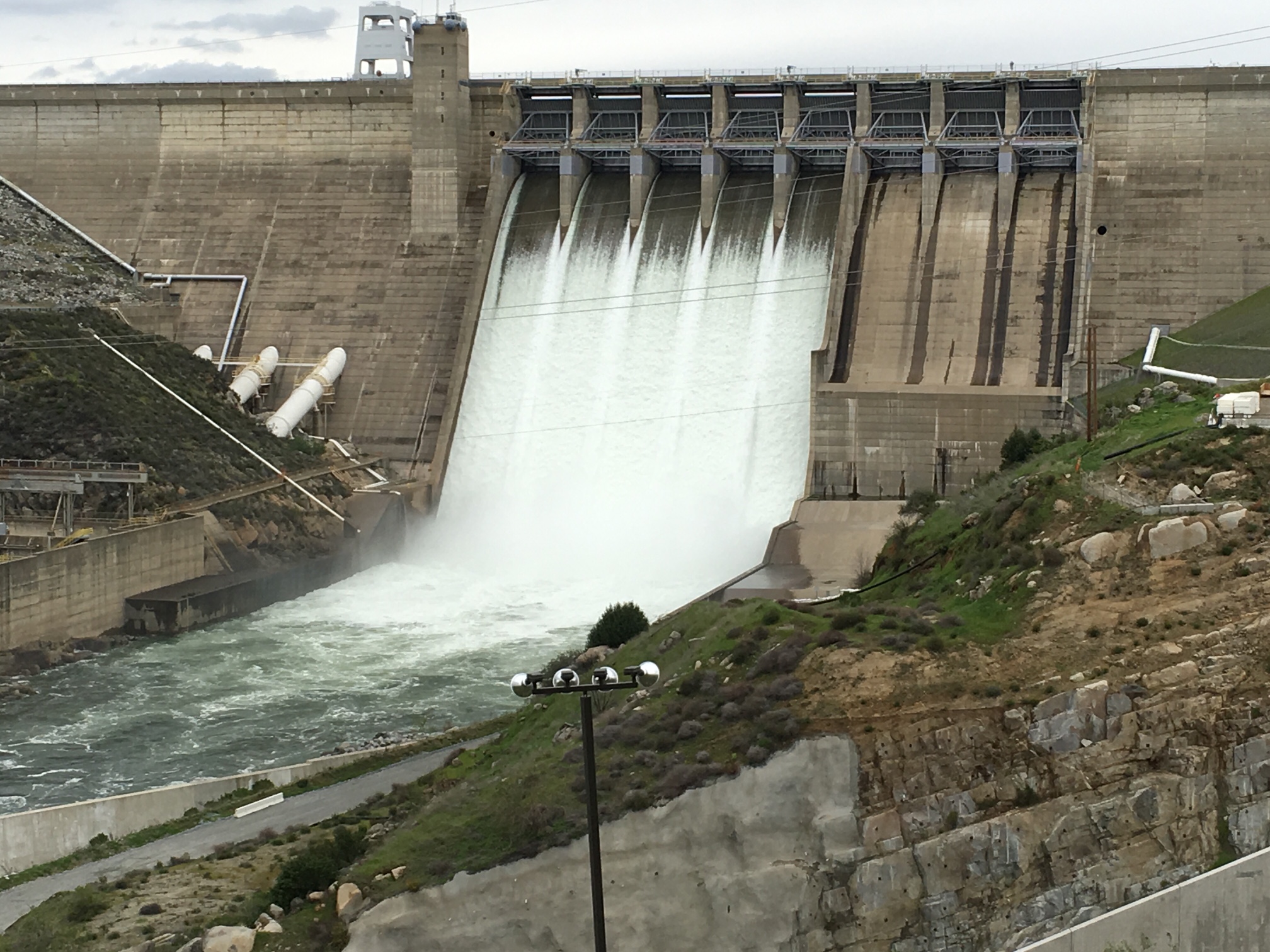The Lake Oroville Dam spillway is crumbling under erosion but the California Department of Water Resources (DWR) is increasing the water flow while crews work on a massive cavity.
Crews expect more erosion but the releases will help the operators absorb rising water levels as storms hit Northern California Thursday and Friday. However, there are no threats to public safety or the integrity of the Oroville Dam, according to DWR.
The Oroville Dam is at 90 percent of its 3.5 million acre-feet capacity so the DWR may also use an emergency spillway, separate from the damaged spillway, where water flows once the reservoir has reached its capacity. This the first time the spillway could be used in the dam’s 48-year history.
But what exactly is a spillway and how does it work?
A spillway is a structure constructed in hydroelectric dam to provide a safe passageway for floodwaters to escape downstream, usually into a river, according to Energy Education, a University of Calgary website.
A gated spillway, such as the one at the Oroville Dam, is controlled with gates that can be raised and lowered.
Spillways are a crucial part of the dam facility because once a reservoir has reached capacity and if floodwaters enter the reservoir, the water level increase could cause over-topping of the dam. When a reservoir is full, its water level will be equal to the height of the spillway. As soon as any excess water enters the reservoir, water will start flowing out through the spillway. It works similar to an overflow hole in a bathtub or sink at home, where if water levels go too high it'll go into the hole and through the drain.
In addition, when there is too much water going through the dam, turbines can't function properly and can be damaged. Spillways protect the dam's elements from being damaged.
An emergency spillway is a secondary to the principal spillway and is used under extreme conditions in case of a malfunction, such as with the situation at the Lake Oroville Dam.
About the Lake Oroville Dam:
Lake Oroville, the second largest reservoir in California, is in the foothills just east of the city of Oroville, about 70 miles north of Sacramento. At 770 feet, the Oroville Dam is the tallest dam in the U.S., taller than the Hoover Dam, according to DWR. Construction on the dam began in 1961 and the embankment was topped out in 1967.
Lake Oroville and Oroville Dam are part of a complex which includes the Hyatt Powerplant, the Thermalito facilities, the Feather River Fish Hatchery and the Lake Oroville Visitors Center. The Oroville-Thermalito Complex was designed as an efficient water and power system.


